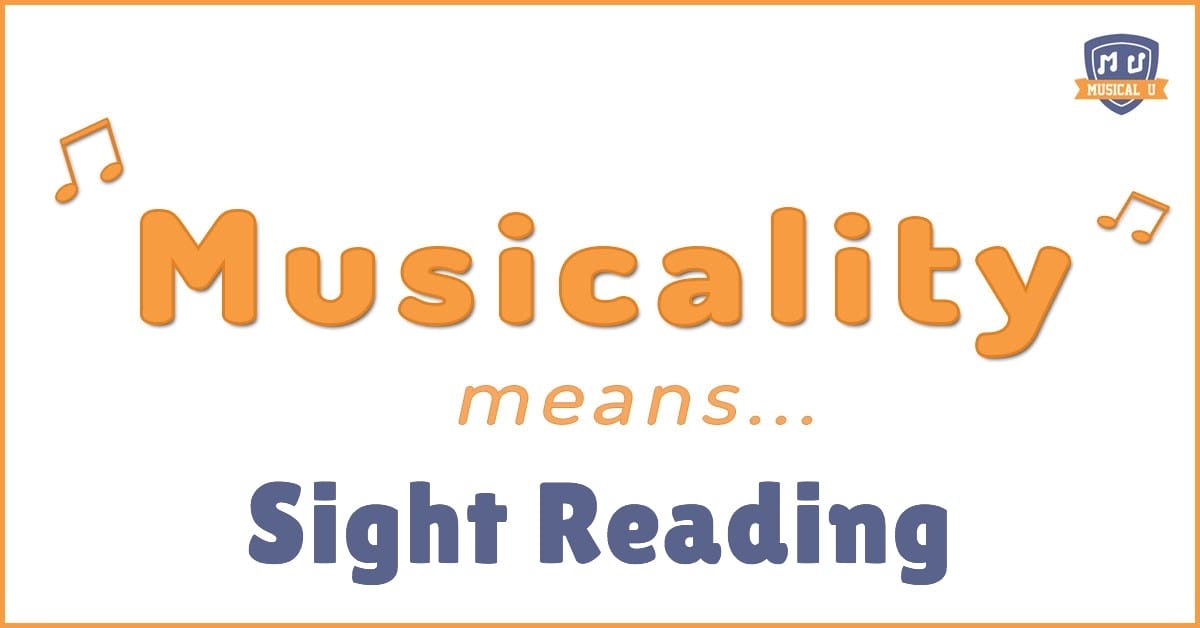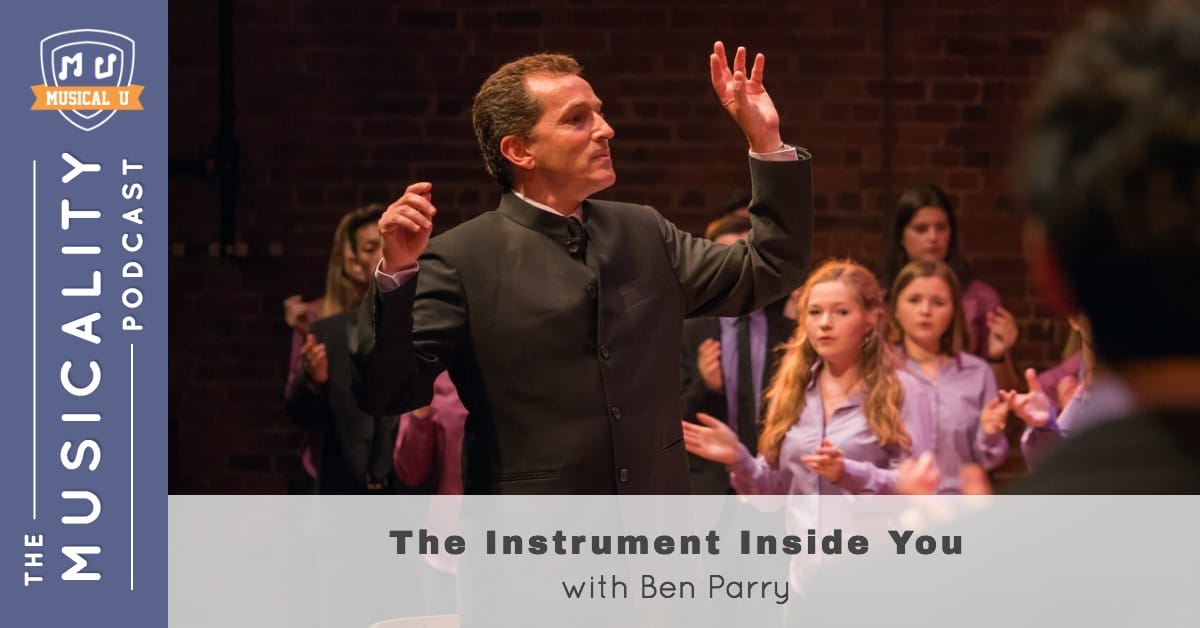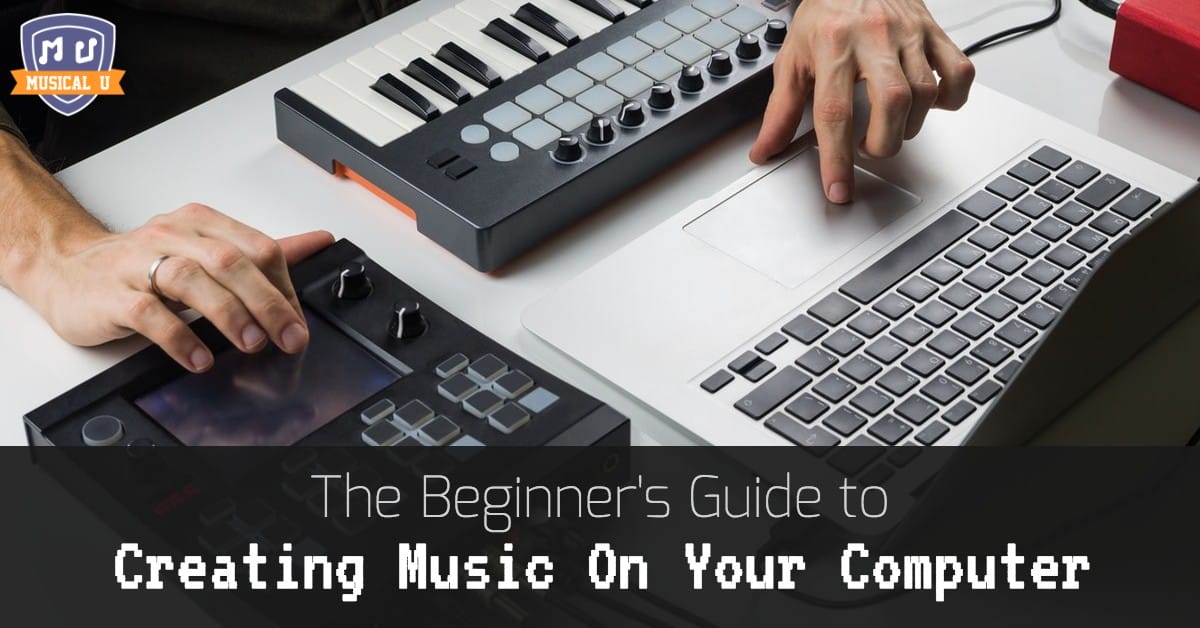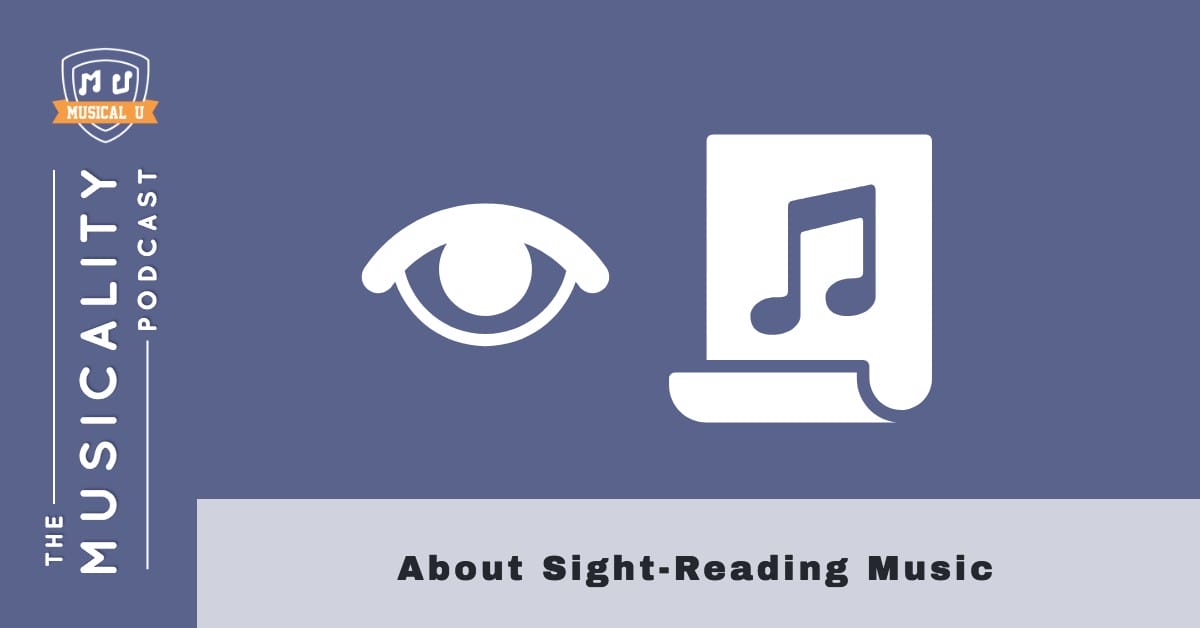When we’re engrossed in musical learning, we often forget to evaluate our progress and seek ways to improve or accelerate our trajectory.
This week, we’re encouraging you to reflect on your musical journey, and think about how you can take both your learning and your practice to the next level.
We examine how sight reading can become musical rather than mechanical, how one vocal instructor pushes the boundaries of teaching singing, and how you can use technology to push the limits of your songwriting process.
Sight Reading
Undoubtedly one of the most impressive musical skills out there is sight reading, or a musician’s ability to simply look at a piece of sheet music, take a deep breath, and play it as effortlessly and musically as if they had practiced it a hundred times before.
 In Musicality Means… Sight Reading, we examine this skill, the obvious and not-so-obvious musical benefits that come from mastering it, and how you can begin practicing it in a way that won’t leave you feeling discouraged.
In Musicality Means… Sight Reading, we examine this skill, the obvious and not-so-obvious musical benefits that come from mastering it, and how you can begin practicing it in a way that won’t leave you feeling discouraged.
Most importantly, we share a hidden “trick” to effective sight reading – an approach that goes beyond the note-by-note tactic, and gives you a deeper understanding of the music you’re playing.
Learning how to sight read doesn’t happen overnight. It takes years of deliberate practice to get comfortable and proficient with this skill. No matter your current abilities, there is always room for improvement – Peppermints and Cherries shows you how.
It’s such an interesting age to live in, with the explosion of mobile technologies! It seems like there is an app for nearly everything, and this includes sight reading. The Curious Piano Teachers take you through a review of a new sight reading app from ABRSM.
Becoming a great sight reader is a neverending journey, which is exciting because you know that there is always something new to do! The Hoffman Academy discusses how to improve your reading skills by building a solid foundation.
Vocal Wisdom
For those who use their voice as their primary instrument, there are considerations that no other musician needs to even worry about. For starters, getting in tune and staying in tune isn’t as easy as just finding the note on your instrument.
 And naturally, things get more complicated when you put singers together in a group and ask them to sing in tandem; how does a choir or an a cappella group stay in tune?
And naturally, things get more complicated when you put singers together in a group and ask them to sing in tandem; how does a choir or an a cappella group stay in tune?
In The Instrument Inside You, with Ben Parry, the veteran choir director, singer, and arranger shares a goldmine of wisdom on the unique challenges of a cappella singing, the pros and cons of the two approaches for learning relative pitch, and how the lessons learned through his rich music career have influenced his supportive and accessible (yet totally boundary-pushing) teaching style.
Ben has such an personal inspiring story that it may encourage you to explore your own singing. For some musicians, discovering their musical voice is full of self-doubt about their abilities and comparing themselves to other singers. But as Steven M. Demorest discusses, ultimately, everyone can sing!
Like many of the musicians that we talk to on the podcast, Ben initially discovered his love for music as a child. Children are naturally curious about a great many things, and discovering their singing voice can be exciting and rewarding for their overall growth. Ashley Danyew discusses more about how to help children start singing.
Here at Musical U, we share a passion with Ben for a cappella music, and we are always encouraging other musicians to explore this unique musical expression. Become Singers discusses singing a cappella, with some tips on how to sing professionally.
Computer Creations
The advent of digital audio workstations (or DAWs, for short) has made electronic music production accessible, intuitive, and fun. No longer do you need a collection of synthesizers, drum machines, samplers, and effects pedals to make tunes – it’s all there for you, waiting in Ableton, Garageband, Logic Pro X, or whichever software suits you best.
 Learn about the basics of computer-based musicmaking with The Beginner’s Guide To Creating Music On Your Computer, which covers everything from the gear you’ll need to get started, to the types of audio files that you can work with and the ways in which DAWs make arranging, mixing, and adding effects a breeze.
Learn about the basics of computer-based musicmaking with The Beginner’s Guide To Creating Music On Your Computer, which covers everything from the gear you’ll need to get started, to the types of audio files that you can work with and the ways in which DAWs make arranging, mixing, and adding effects a breeze.
If you’re more interested in using a DAW to compose and arrange with an instrument you already play, then don’t skip this guide – we also explore how this software can help you create music with a non-virtual instrument, with the use of recording, arranging, looping, and effects!
It’s truly a fascinating time to be a musician, as technology has allowed us to do things that weren’t possible only a couple of years ago. In no way is that more apparent than in the evolution in home recording technology. For an in-depth discussion on how to create a professional recording studio at home, we turn to Bree Noble at Female Entrepreneur Musician.
If you have already set up a recording studio, no matter how basic or complex, it’s time to lay down some tracks! The process to record music is different than how you would rehearse. It’s best to think of a strategy for getting the most out of your recording sessions, as Music Tech Student discusses.
The same technology that allows us to easily record music has also permitted us to share and collaborate with other musicians via the internet. One example of this is the number of teachers that teach exclusively online. For some suggestions on how to get yourself set up to stream your music performance, we turn to Emily Dolan Davies and Airgigs.
Music At A Glance
Learning to sight read in the traditional way involves a lot of trial-and-error and a lot, lot, lot of repetition. The result? You can play a piece note-by-note as you are reading the sheet music, with your brain translating each note on the page into movement of your fingers.
 Though this is certainly impressive, it’s hard to play in a musical and expressive manner if you are stuck in this note-by-note mindset!
Though this is certainly impressive, it’s hard to play in a musical and expressive manner if you are stuck in this note-by-note mindset!
In About Sight-Reading Music, we go beyond the bare-bones skill of playing from the page, and share the secret of infusing your sight reading with musicality – something that will improve your playing and deepen your understanding of the music.
In your musical toolbox, the ability to sight-read is some kind of Frankenstein combination all-in-one craftsman super tool. You can apply this skill to nearly every aspect of your musicality! Read Melanie Spanswick’s 15 top tips to successful sight reading to get you started.
Learning to be a music teacher has helped many musicians improve their confidence as a musician. However, sight reading is a particularly difficult skill to teach. Diane Hidy has ten tips for effectively teaching sight reading.
No matter how long you have been sight reading, or how proficient you are at this task, there is always more work to be done. Indeed, sight reading is a foundational skill and is best if practiced a bit every day. Start Piano Studio explores making sight reading an everyday exercise on their blog.
Remaining A Step Ahead
Get into the habit of looking at your musical journey and asking yourself the question, “How can I learn this skill or concept in a way that will most benefit my musicality?”.
Keep the idea of deliberate practice in your head. While adding a skill to your musical toolbox is an accomplishment in itself (and one you should be proud of!), think about how you can learn the skill as effectively as possible, so you can apply to it to a broad range of musical situations.
This sort of pragmatic thinking is what will take you from a technically skilled player to an expressive musician.
How do you evaluate your own progress? Writing in a journal about the skills you are learning, how you are learning them, and the progress you are making is a fantastic way to critically examine your learning journey.
The post Sight Reading, Vocal Wisdom, Computer Creations, and Music at a Glance appeared first on Musical U.